Today’s college students are “eco-minded” and expect colleges/universities to be environmentally conscious and to push green global initiatives. CycleSafe bicycle lockers and racks are a key component in this sustainability movement to help college and university officials meet their green goals. CycleSafe bicycle lockers and racks are in place at many colleges and universities throughout the United States. These amenities for students/staff helps to entice students back to on-campus housing and reduces off street parking, traffic congestion and the need for expensive parking lots. Promoting cycling on campus also reduces air pollution while preserving green space and improving overall community health.
University of Minnesota
Many of the 80,000 people who commute to the University of Minnesota each day compete for the 20,000 available parking spaces. The university also lost several surface lots to new building construction. Although several initiatives encouraged bicycle commuting, taking the bus or carpooling, university officials realized that to have an effective bicycle program would require more than a few bike racks. Since the first purchase of CycleSafe bike lockers at the University of Minnesota in 1995 many more lockers have been installed. University officials and students have been impressed with the durability, security and quality of the units. Since the installation of the lockers, bike thefts have decreased thanks to the lockers vandal resistant design. Steve Sanders, Facilities/Campus Bicycle Coordinator for parking and transportation services, said the lockers are installed in 15 locations across three separate campuses. “The university is the third largest traffic generator in the state, so the more people we can stop from driving, the better,” Sanders said.
University of Nevada Reno
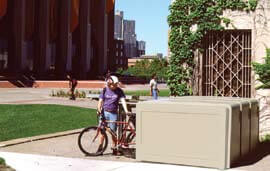 Don’t bring your car to the University of Nevada Reno – there are other options is the message for faculty, staff and students. In an effort to provide alternatives to cars and parking lots, the university has installed CycleSafe lockers to encourage cycling around campus. Some faculty members, many of whom have expensive bicycles for commuting to campus, researched several brands of lockers and recommended CycleSafe because of ease of use and durability. Michelle Horton, Alternative Transportation Manager for the University of Nevada Reno said the university never had a desire to purchase competing brands. Horton said the CycleSafe lockers fit nicely with the university’s architecture and green initiatives. Secure bicycle parking provides the commuter reliability that encourages use. There is a waiting list for the CycleSafe lockers that are used primarily by faculty and staff.
Don’t bring your car to the University of Nevada Reno – there are other options is the message for faculty, staff and students. In an effort to provide alternatives to cars and parking lots, the university has installed CycleSafe lockers to encourage cycling around campus. Some faculty members, many of whom have expensive bicycles for commuting to campus, researched several brands of lockers and recommended CycleSafe because of ease of use and durability. Michelle Horton, Alternative Transportation Manager for the University of Nevada Reno said the university never had a desire to purchase competing brands. Horton said the CycleSafe lockers fit nicely with the university’s architecture and green initiatives. Secure bicycle parking provides the commuter reliability that encourages use. There is a waiting list for the CycleSafe lockers that are used primarily by faculty and staff.
Just Some of the Universities that Rely on CycleSafe
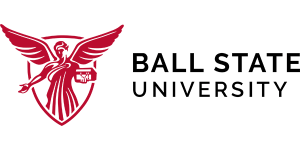



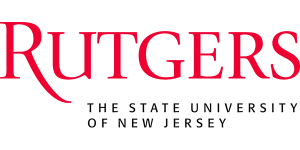


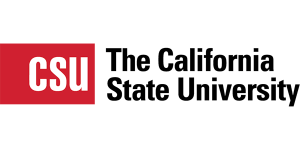
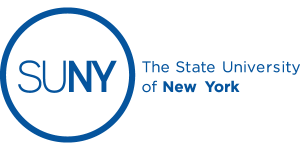






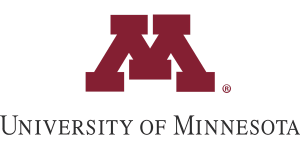









Wesleyan University
Wesleyan University in Middletown, Conn, wanted more students to consider on-campus housing so they built Fauver Halls, which now provide on-campus housing for 270 additional students. The new residence halls relieve the pressure on local neighborhoods by providing safe, affordable housing and bike parking. Wesleyan officials understand the importance of providing amenities consistent with the values of today’s students. Each new facility was specifically designed to encourage bicycle transportation. CycleSafe WallRacks were installed in the new residence halls, creating a bike room for the many students who rely on bicycles for transportation around campus and the community. This vertical storage system is space efficient as bikes are parked against a wall to open up floor space. CycleSafe WallRacks are located in a designated room in each new residence hall to provide complete protection from the elements and inclement weather. WallRacks offer a higher level of security compared to hook racks and feature tamper resistant components. Cyclists can secure and protect the bike frame and wheel to the rack. WallRacks users access their bikes through a keyed entry system to the bike room equipped with WallRacks. Robert Schmidt, project manager with the organization that manages capital projects at Wesleyan, said the racks are very popular. The WallRacks were selected because of the product’s space saving design. “The wall hung option was the best solution for our new buildings,” Schmidt said. “This design keeps our floor areas open, makes it easy to clean and allows for a more efficient use of space.” He noted the space was specifically designed around the CycleSafe WallRack. At Wesleyan the racks encourage the use of alternative transportation and reduce the amount of harmful emissions. The bike parking used in this student housing project helped the university earn LEED (Leadership in Energy & Environmental Design) points from the U.S. Green Building Council under the Sustainable Sites category.
Ball State University
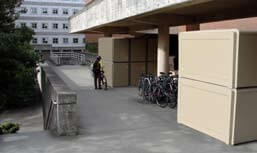 Bike parking is a critical element in Ball State University’s mission to improve environmental and maintain the aesthetic quality of the campus. More bikes mean less space for automobile parking as well as less air pollution and open green areas. Ball State’s first lockers installed were made of wood and did not meet architectural or performance standards. The wood lockers were replaced with CycleSafe lockers, which have proven superior to wood, steel and fiberglass lockers for aesthetic quality and product life. Staff and students have reacted positively. “The staff is very happy with the look, sturdiness and manufacturing of the CycleSafe lockers and the students like the look and security better than the old ones,” said Ball State Assistant Director of Housing and Residence Life for Business Services, Eva Newnam. She said the lockers have been easy to manage and are installed outside student housing complexes. CycleSafe lockers meet the sustainability needs for an environmentally conscious organization like Ball State University. The CycleSafe lockers are arranged in rows of 24 lockers, one of the longest rows of CycleSafe lockers in the United States.
Bike parking is a critical element in Ball State University’s mission to improve environmental and maintain the aesthetic quality of the campus. More bikes mean less space for automobile parking as well as less air pollution and open green areas. Ball State’s first lockers installed were made of wood and did not meet architectural or performance standards. The wood lockers were replaced with CycleSafe lockers, which have proven superior to wood, steel and fiberglass lockers for aesthetic quality and product life. Staff and students have reacted positively. “The staff is very happy with the look, sturdiness and manufacturing of the CycleSafe lockers and the students like the look and security better than the old ones,” said Ball State Assistant Director of Housing and Residence Life for Business Services, Eva Newnam. She said the lockers have been easy to manage and are installed outside student housing complexes. CycleSafe lockers meet the sustainability needs for an environmentally conscious organization like Ball State University. The CycleSafe lockers are arranged in rows of 24 lockers, one of the longest rows of CycleSafe lockers in the United States.
Project in Brief
The University of Minnesota
University of Nevada Reno
Wesleyan University
Ball State University
